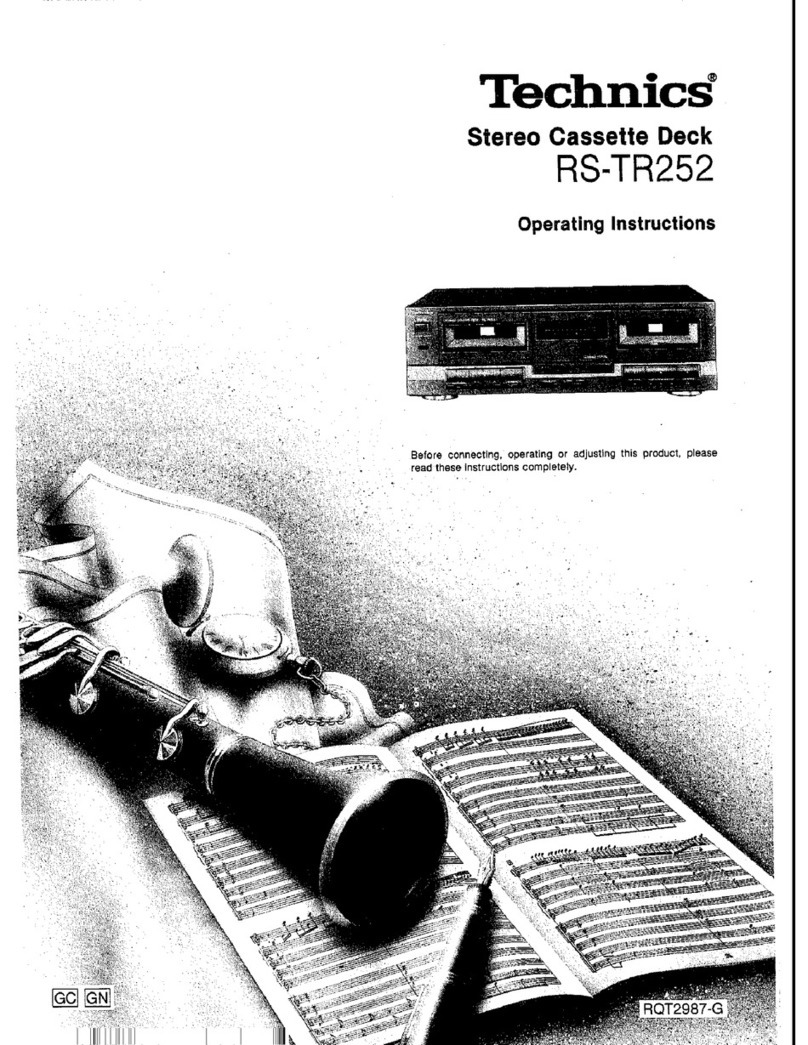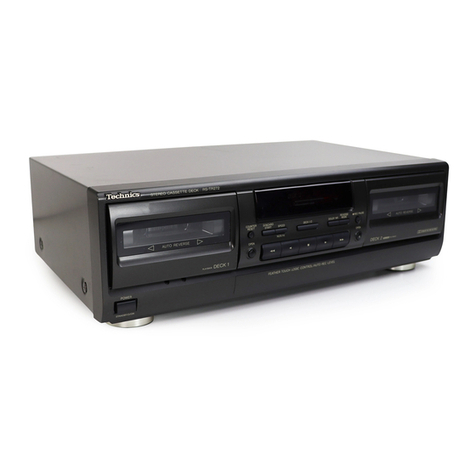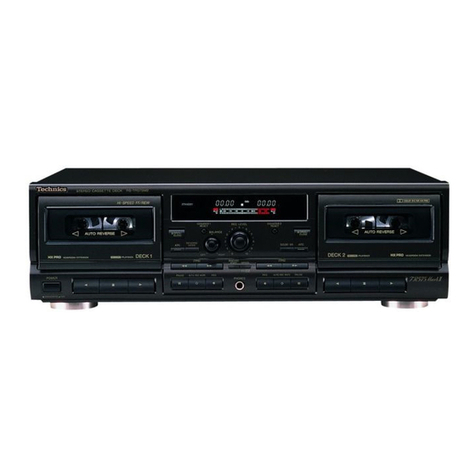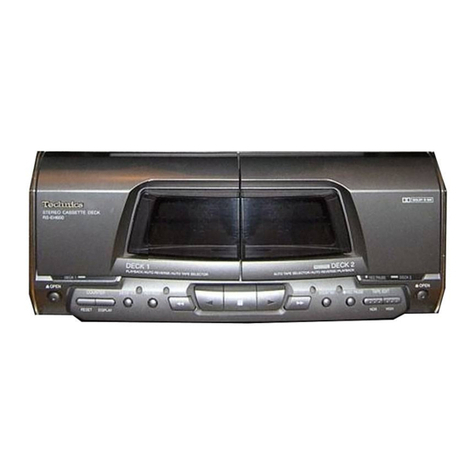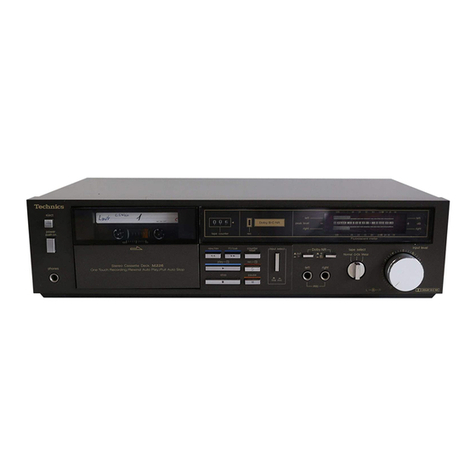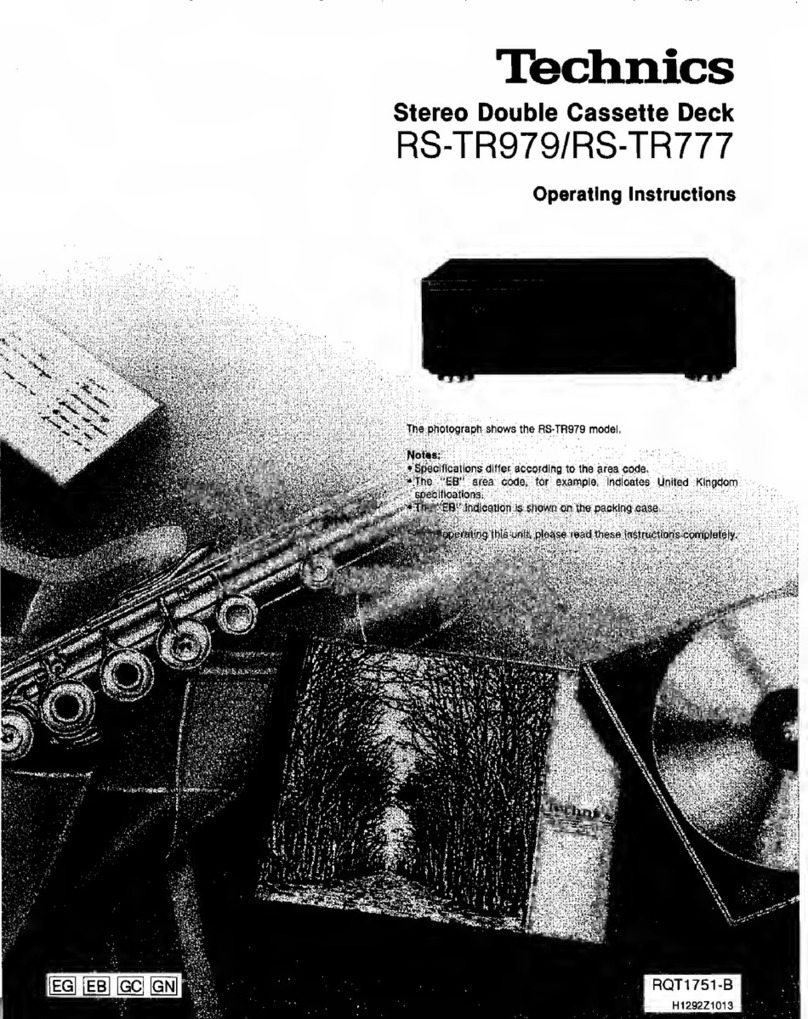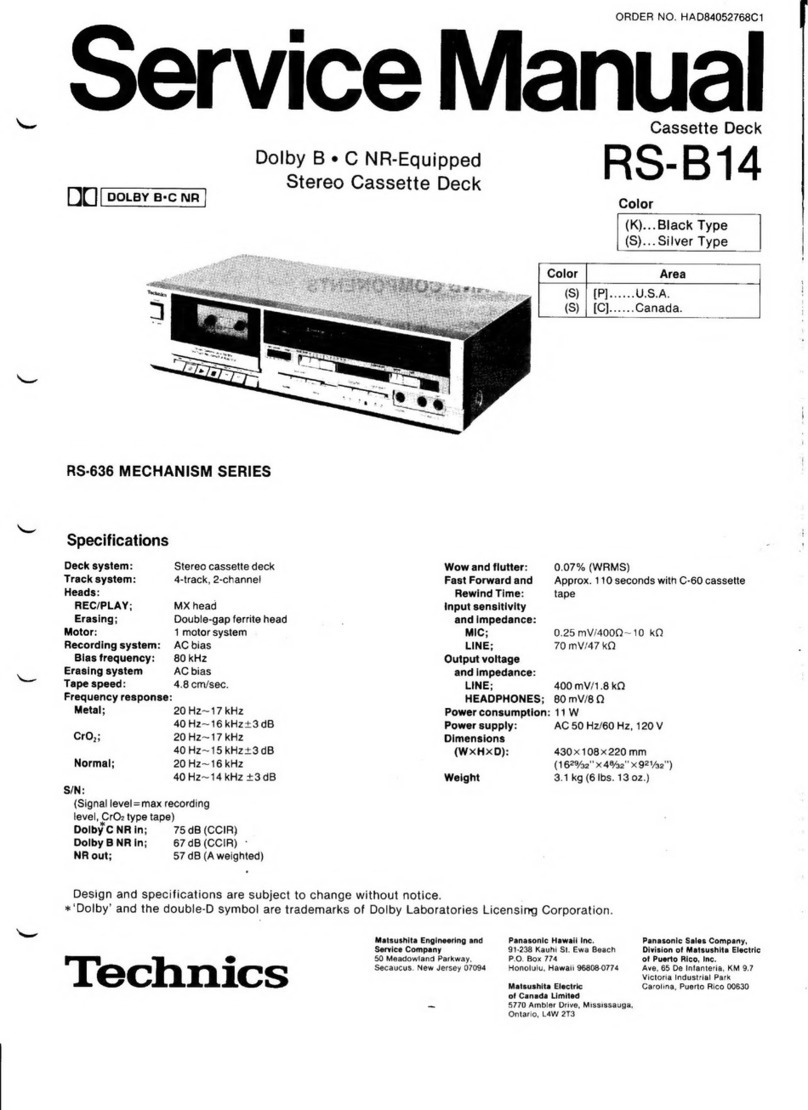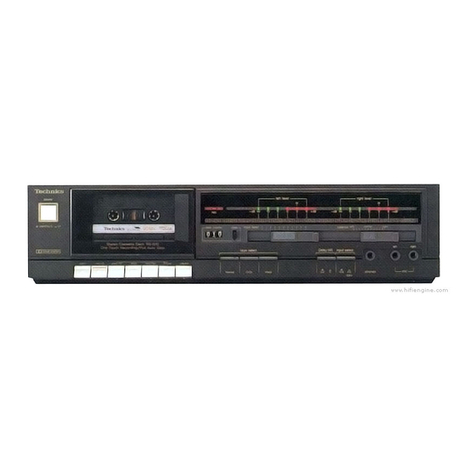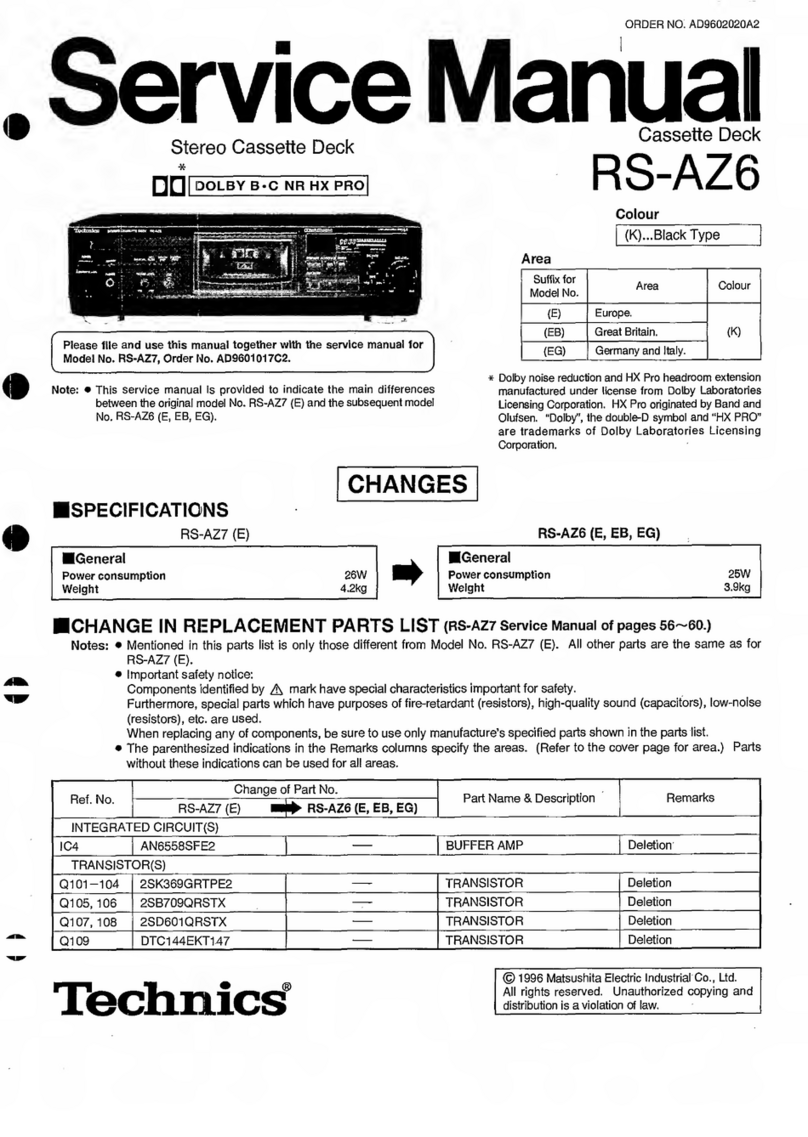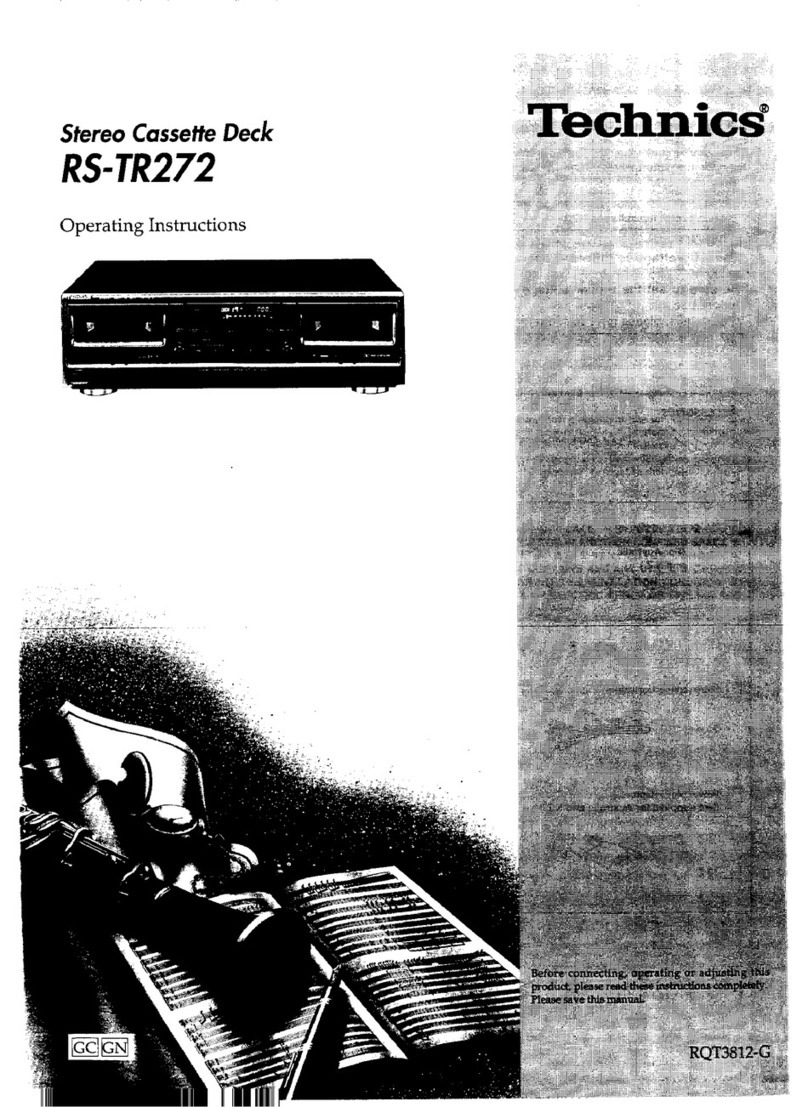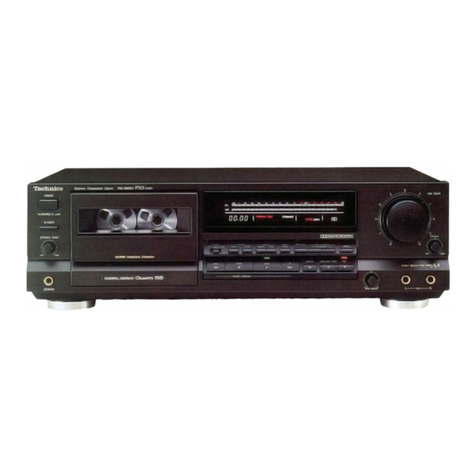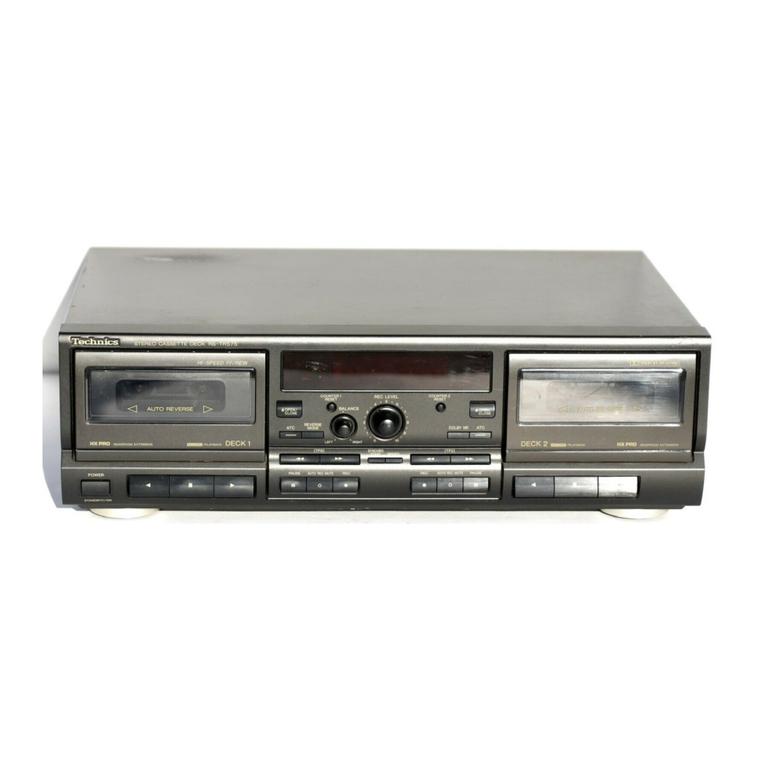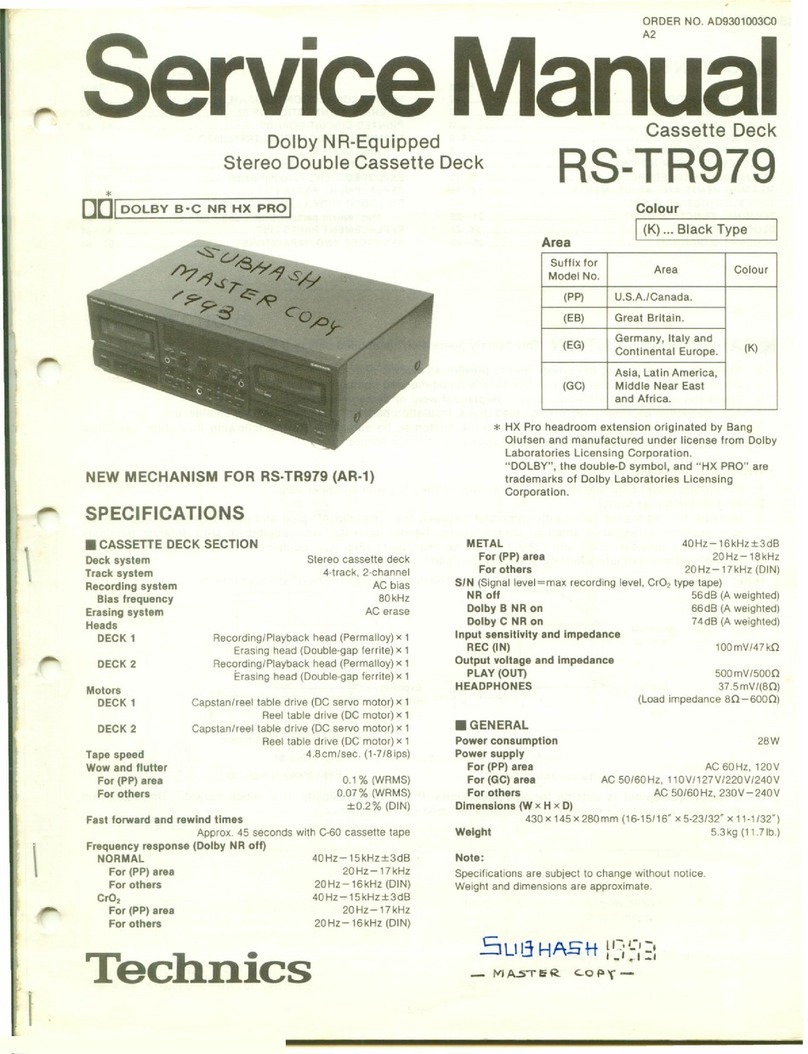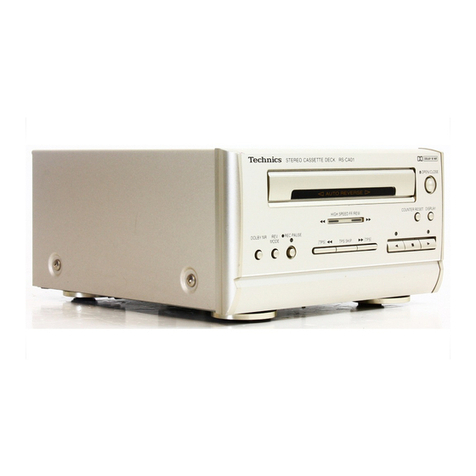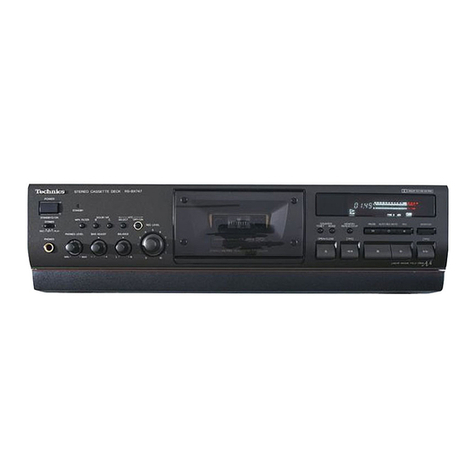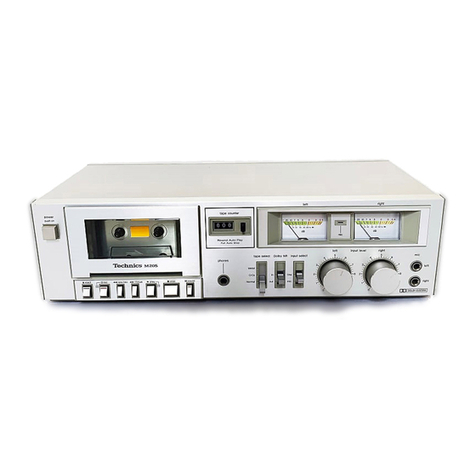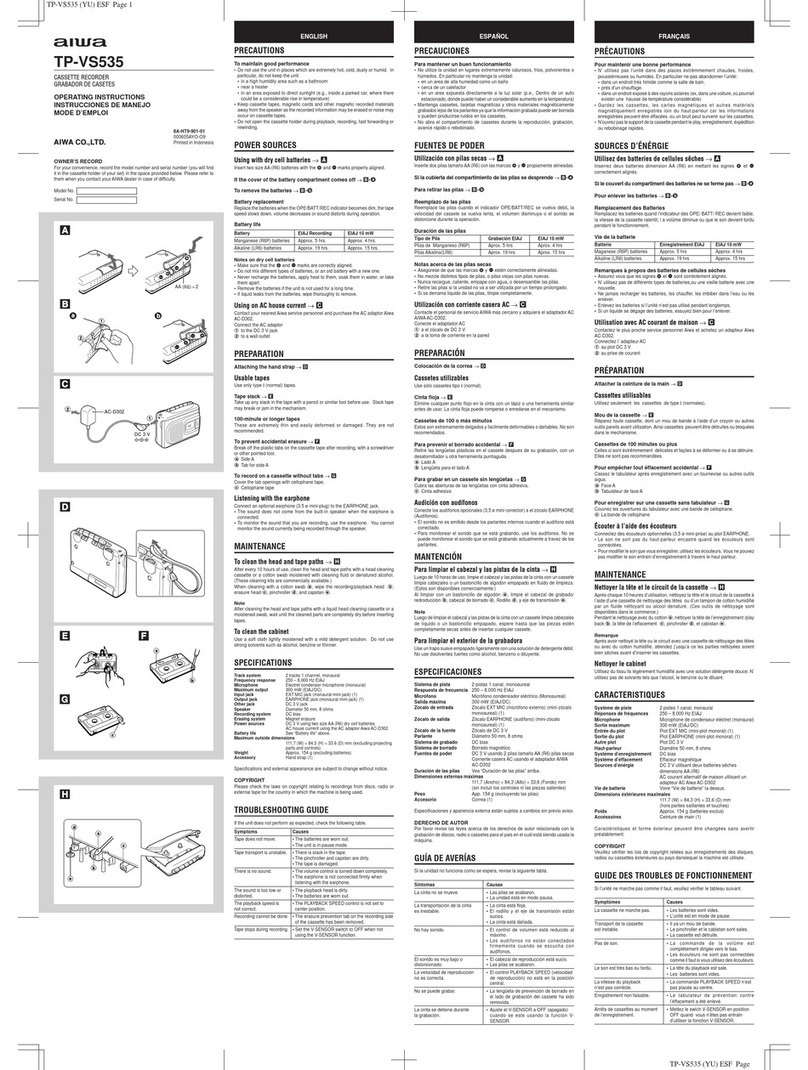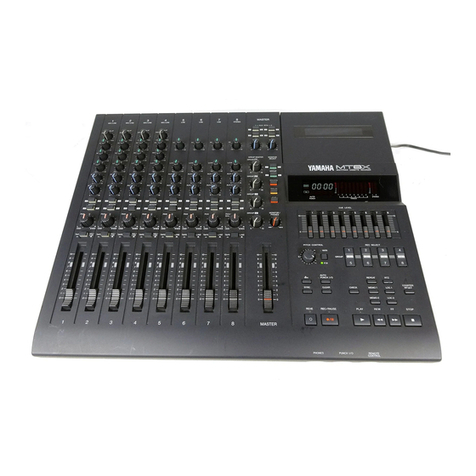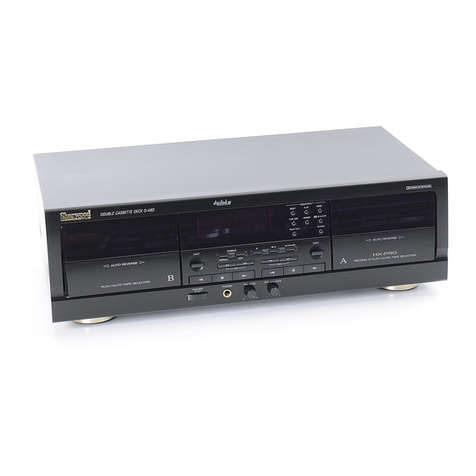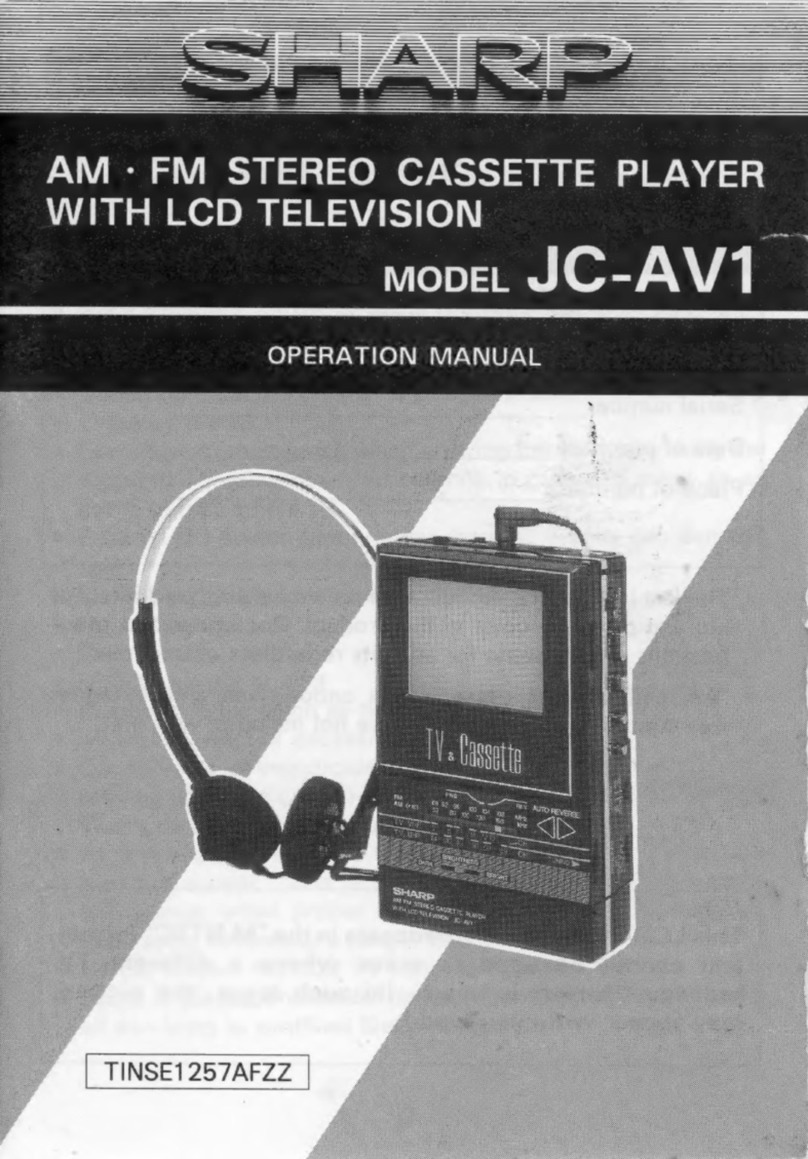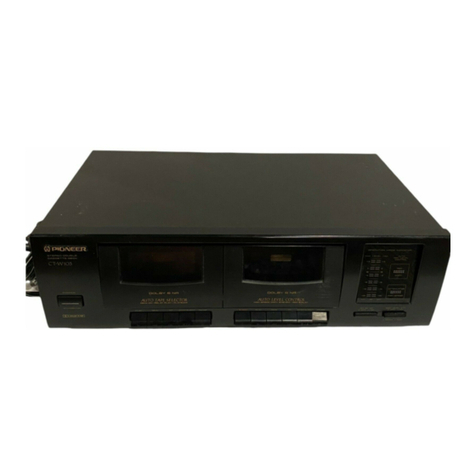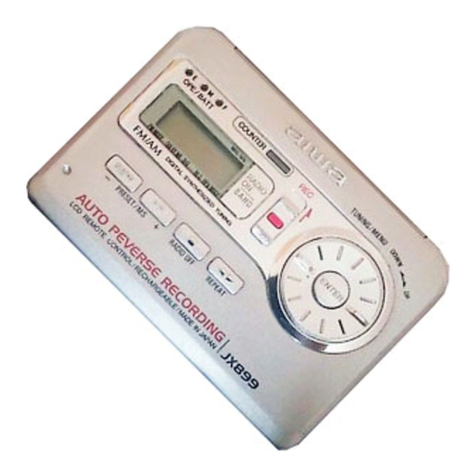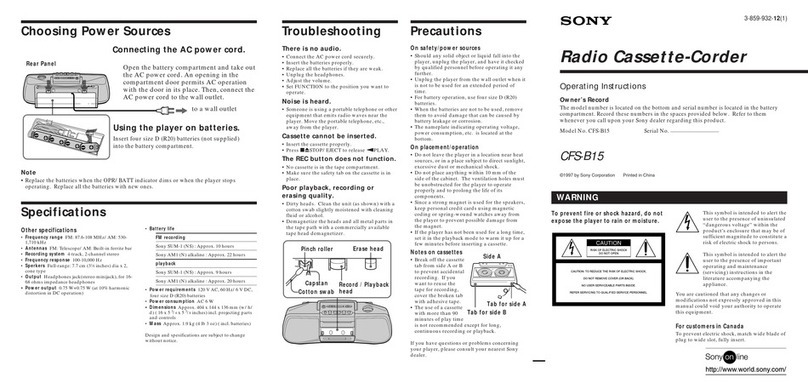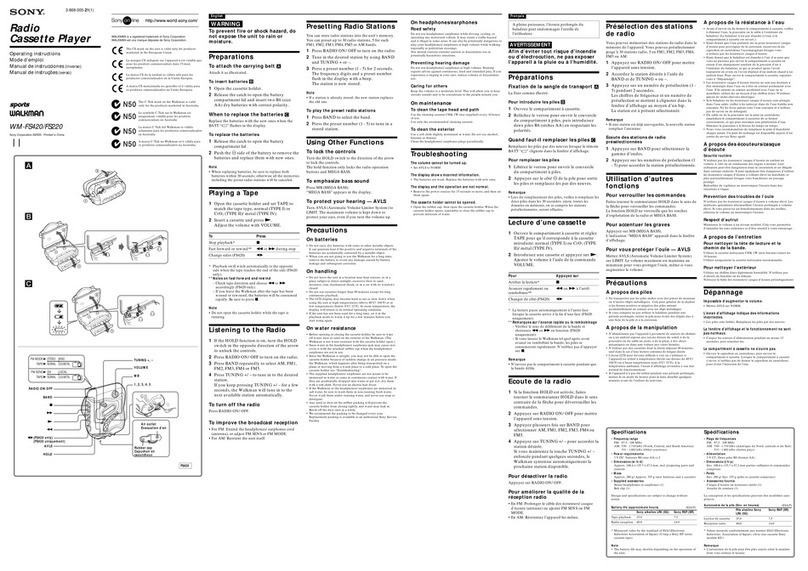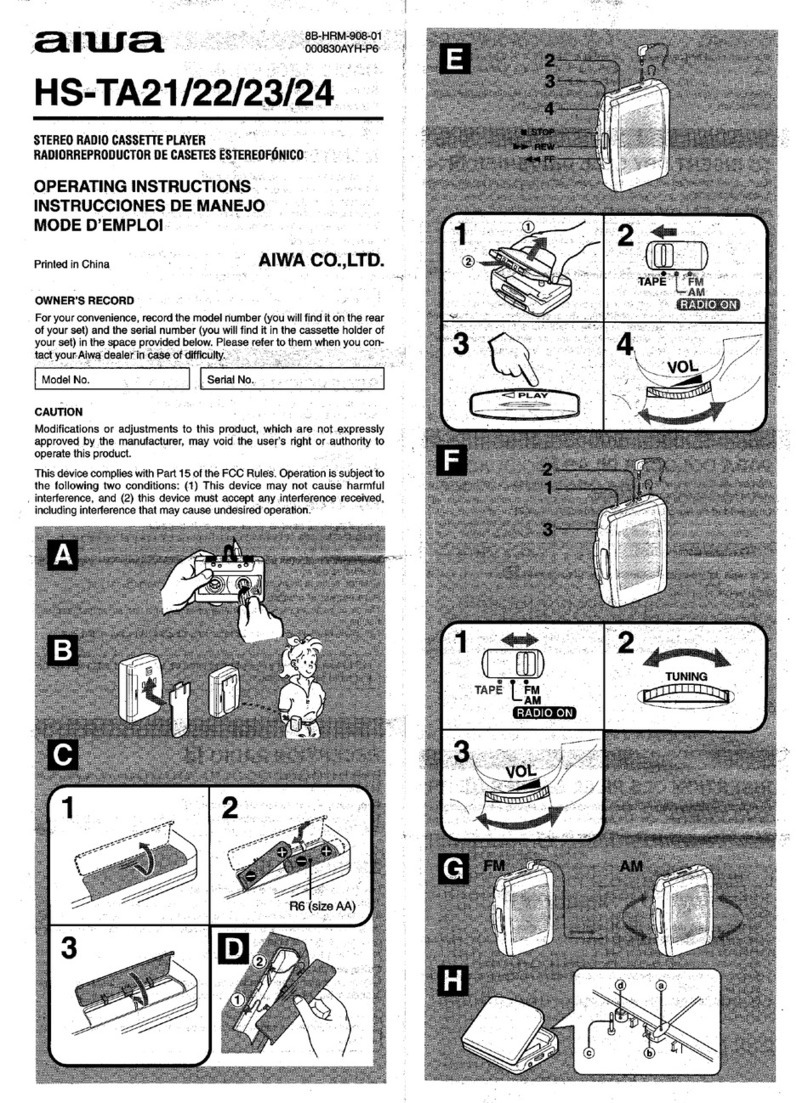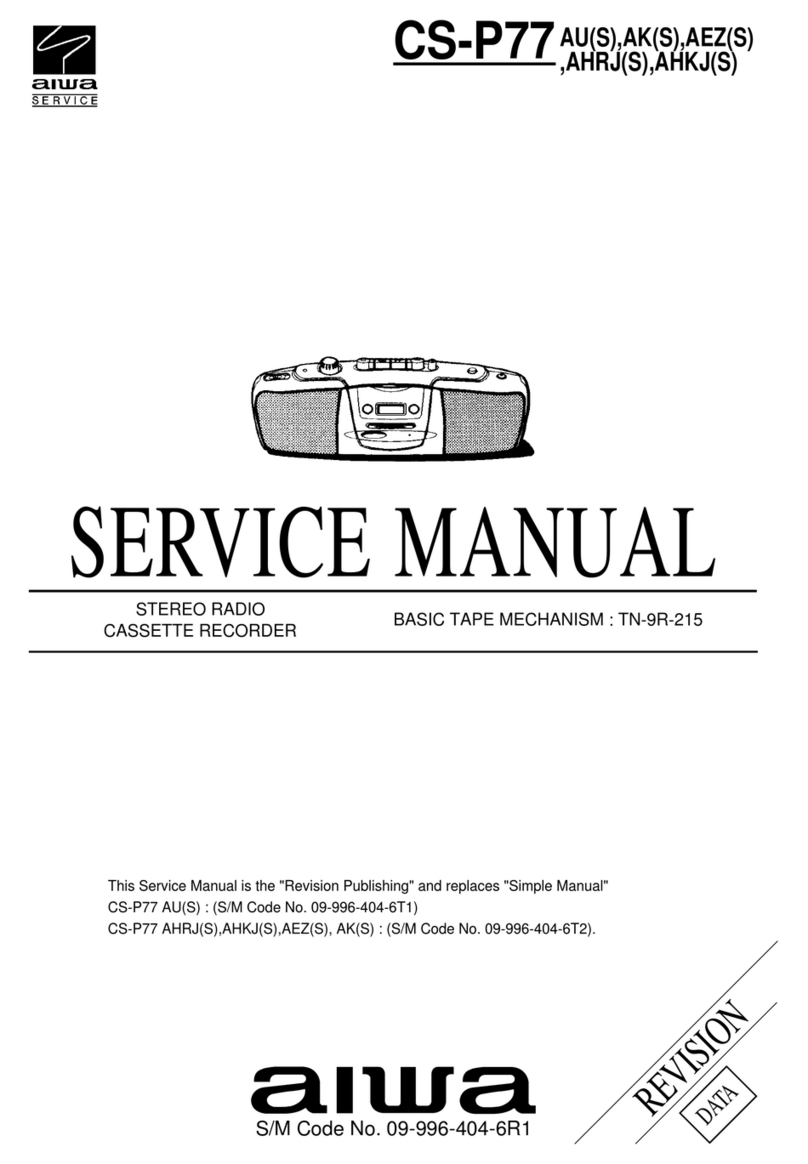
RS-M14
CONTENTS
ITEM
|
PAGE
LOCATION
OF
CONTROLS
AND
COMPONENTS
certsssttestresteteeteeteeteceestectecteetaeenseeseesenes
{
DISASSEMBLY
INSTRUCTIONS
ssses:sstionncasnicastansanenaesainenes
esiguaiuy
tant
mete
aeniawasrenecatanenens
aie
2
DISASSEMBLY
NOTES
(MECHANISM
UNIT)
ccccccssrsscreeteeeceeceeetseeccteceessesecceseeeenseresseeas
3
ASSEMBLY
INSTRUCTIONS:
se:
s2ssssee2sssais
coscsssnasgencmeseersanancs
sas
anos
cemncmemonscemaeananmaeacneas
4
ADJUSTMENT
PARTS
LOGATION:
st0:3sscncesscnsentnsnaansisaweiosnamemicnioninnleemadey
enahG
ules
weneamerelnor
5
MEASUREMENT
AND
ADJUSTMENT
METHODS
cevecccrccesteeteceeeteceeeeceeetecsesseeeeeeeeeeeseens
6
ELECTRICAL
PARTS
LOCATIONicecssisectivctieniges
suniecierseadmesdpenruien
saumemes
Nace
sarteeatsins
dwar
aumneta
nents
8
SCHEMATIC
DIAGRAM
i
aetiwnnesimnrewswansnaniaeieis
dafaites
son
teaismesines
sales
enmebebc@uarmsacdcos@hessunntunlnenes
9
WIRING
CONNECTION
DIAGRAM
AND
CIRCUIT
BOARDS
'::+erseccereeceeceeteecenteeeeeeeaeeneees
10
EXPLODED:
VIEWS
sitatiasiccotsssnssaadicaine
sesasn
anions
seam
agicuadatltianinemeiusnbpiinedanaetnaanmrameasnedensawen
11
MECHAMICAL
PARTS.
LGGATION.
ssseseswizssech
caasecaqnessetagatinns
dhep
ease
baieiaiescmeaninsesmenanaec
sanaes
11
CABINE
TH
PARTS
sssanesgccnaeasciscdt
a
Mn
wats
smote
cats
Turisiaenats
sol
aismutatn
dete
aieloaamobmnainainewinaeatian’
dels
13
LOCATION
OF
CONTROLS
AND
COMPONENTS
@
Power
switch
@
Cassette
holder
@®
_
Headphones
jack
@
Eject
button
®
Record
button
©
Rewind/review
button
@
Fast
forward/cue
button
Playback
button
@
Stop
button
Pause
button
@
Input
selector
@
Dolby
noise-reduction
switch
@)
Tape
selector
(tape
select-normal/Fe-Cr/CrO2/metal)
Record
muting
button
@®
Input
level
controls
Tape
counter
and
reset
button
@
Record
indication
lamp
FL
(fluorescent
level)
meter
Microphone
jacks
@
Line
output
jacks
@)
Record/playback
connection
socket
@
Line
input
jacks
@
Voltage
selector
